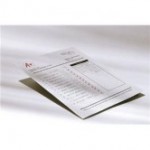
It is impossible to efficiently finalize a project without having developed a comprehensive and informative report. Using project report templates helps project managers to communicate necessary information on project development, implementation and completion to the key stakeholders that have an interest or concern in the project.
The following Project Report Template is designed to help managers with developing a complete structure for their reports. We tried to make the Template comprehensive and included descriptions of the key sections of a typical project report. Also we listed basic suggestions and tips on project report writing.
Advertisement
-
Report Structure: The Key Sections
- Abstract. The Abstract section of a typical project report template usually contains around 500-600 words covering the chosen project implementation methodology and providing insight into various components of the project implementation process.
- Acknowledgement. The Acknowledgement section gives a note of thanks in recognition of the project inputs, governance, or any other support provided by key stakeholders involved in the project. Usually this component of a typical project report document includes around 200-300 words to express thanks to all the people contributed to the successful completion of planned work.
- Table of Contents. The Table of Contents helps readers quickly and conveniently find what they need. For efficiently writing a sample report it is important to make a detailed table of contents to allow readers to get an overview of the project implementation steps and understand what tools, solutions, systems and software were used during the implementation. The goal of the Table of Contents is to conveniently organize the report structure.
- List of Figures. In the List of Figures there are listed all of the titles for figures and tables used in the project reporting template. This section is dedicated to complete the report structure and give readers a list of quick references to the figures and tables.
- Key Chapters. A template of project report usually includes the Key Chapter section is the body of the report to describe the key data and discussions on the project development and implementation. The section may consist of several chapters. For example, in your project report template there may be the following five chapters:
- Chapter 1. Background.
- Chapter 2. Methodology and Design.
- Chapter 3. Findings.
- Chapter 4. Evaluation and Analysis.
- Chapter 5. Results.
- Conclusion. The Conclusion section of the reporting template gives the main cause(s) of the problem or opportunity highlighted by the project. It provides a summary of the discussions made in the Key Chapters, outlines the main findings, and gives a reference to the Recommendations report section.
- Recommendations. The Recommendations section of a sample projector report is designed to call people to action based on the findings, analyses and results that have achieved upon project completion. It should be written with actionable and specific sentences and give a solution for the problem investigated by the project. Often itemized and bulleted lists are used to specify recommendations in the more convenient and readable manner.
- Appendices. The Appendices section of a typical project reporting document includes feed-back forms, maps, photographs, mathematical procedures, statistical calculations, diagrams and raw data, any other material in support of project findings. For instance, in your formal report template you can add such information as Sample Survey Form, Results of Statistical Analysis, Gantt Charts, Resource Usage Diagrams, Project Schedule Template, Issue Log.
- References. The final section of your template for project reporting covers all the sources of information used to make the research and develop the document. The References section is usually designed as a list of books, journals, articles, research papers, formal documents and reports, websites and online resources, and any other material used for preparation of the project report template.
-
Suggestions and Tips
- Keep your project report template short yet comprehensive. Avoid using long and nonsense sentences and try to keep the reader’s focus on the critical components of the document.
- Define the audience. When writing your project report, you should define who will be the reader – one person or a group? Is there a necessity to make several copies of the report?
- Make the report not just readable but pretty and attractive. Think about the best project report format (HTML, Excel, Word, PDF etc.). The easier and more pleasant the report format will be for readers, the more information they will be enabled to comprehend and analyze.
- Develop a top-down approached structure for your project report sample. It is strongly recommended to use the top-down approach for writing reports. Your report structure should list less important details further down.
- Make sure your project report document highlights the biggest issues and risks. Also you need to remember that once a problem is stated it is necessary to describe an efficient solution for that problem.
- Describe milestones. You can include 3-7 milestones in your formal project report template to prove that the progress is being made.
- Include status summaries in each section of your project report to let stakeholders read through just a few sentences required for understanding the key point of the project.